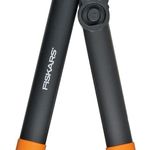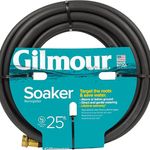
Harvest fruits and vegetables. As the summer heat settles in and your fruits and vegetables continue to mature, get out in the garden and start to gather those delicious delights in a timely fashion! Optimum flavor isn’t always a matter of size or color. Some plants like cucumber and zucchini can be so productive that harvesting is a near daily activity. While catching maturing vegetables and fruits at peak varies with the type of plant, and certainly your culinary preferences, don’t leave ripe produce unpicked for too long. It can begin to lose flavor and nutrient value. Avoid bruising or damaging any vegetables as they are harvested. Be sure to also store them under optimum conditions. If you end up with a surplus of vegetables, consider making a neighborly contribution or donating to a local food bank. Learn about how and when to harvest and store common summer veggies here.

Pick and process herbs. If you are growing herbs, it’s likely you’ve already been picking your basil, oregano, dill, and cilantro, among many others. Harvesting any herb at the optimum time is relative to when the oils responsible for the flavor and/or aroma are at the highest. August is a great month to continue harvesting, and consider gathering herbs for not only fresh use but for future use following appropriate processes for drying or freezing. Removing the flowers of some herbs (e.g., sweet basil) is a good idea when what you really want is the foliage. This delays the eventual demise of these annuals. Harvest herbs early in the morning when the dew has dried but the heat of the day hasn’t settled in yet. Keep in mind that perennial herbs shouldn’t be harvested within one month of your first frost date, as tender new growth encouraged by late harvests can be damaged in cooler weather.

Scout for insect and disease problems. The summer months bring about their own problems with myriad insect and disease challenges. Weather is certainly a major factor as it relates to diseases and fluctuating populations of problematic insects. Constant scouting of the garden will help identify problems early and help you quickly decide upon a course of action. We know that healthy plants and gardens tend to have fewer problems with damaging insects and diseases, so achieving that balance becomes important through the season. Healthy gardens also include a diverse population of beneficial insects and pollinators, which should be taken into consideration. Inevitably, some problems do arise that will require a course of action (cultural modifications, removals, treatments, etc.). Contact your local extension office for additional assistance in identifying problems and receiving mitigation strategies.

Continue composting. Research has shown that over half of our food waste could be composted and used in the garden! If you are currently composting, August is a month to examine your compost pile and consider adding moisture if it’s been a dry year. You can tell if there is enough moisture by using the squeeze test. Squeeze a couple of samples to see if they stick together and shed a couple drops of water. This indicates ideal moisture. The 1 inch of rain per week that we hope for is typically adequate to keep a compost pile hydrated. Perhaps you should also turn your pile now as well. The three-bin system offers the ability to transfer materials between the bins to create a mobile system for new compost materials to be shifted over time and become ready to use in the garden. If you aren’t composting yet, consider the value of reducing your carbon footprint and the benefits of incorporating your own compost into your garden. This material will enrich the soil, improve soil structure, maintain moisture levels, and encourage beneficial bacteria, among other benefits. Learn how to get started and how to successfully compost on any scale.

Overseed lawns. Depending on your location, late summer into early fall is the ideal time for overseeding your turf areas. New seed at this time of year benefits from the warmth of soil for germination, cooler nights, more consistent rainfall, and less competition from warm-season weeds. A lush and vibrant lawn with improved thickness and density helps keep weeds at bay and is resistant to insect and disease challenges. Your seed mix should be tailored for your area and take into account the amount of sunlight your turf receives. Healthy turf has many uses for play and recreation, but do consider all of the inputs involved with maintaining these areas. Explore developments in drought-tolerant turf alternatives and other gardening approaches that minimize these inputs and conserve resources.
—Mark Dwyer, former director of horticulture at Rotary Botanical Gardens in Janesville, Wisconsin, operates Landscape Prescriptions by MD.
Fine Gardening Recommended Products

Fiskars 15" PowerGear Loppers—Sharp Steel Blade Bush and Tree Trimmer
Fine Gardening receives a commission for items purchased through links on this site, including Amazon Associates and other affiliate advertising programs.

Gilmour 5/8" x 25' Round Weeper Soaker Hose
Fine Gardening receives a commission for items purchased through links on this site, including Amazon Associates and other affiliate advertising programs.



















Comments
Log in or create an account to post a comment.
Sign up Log in